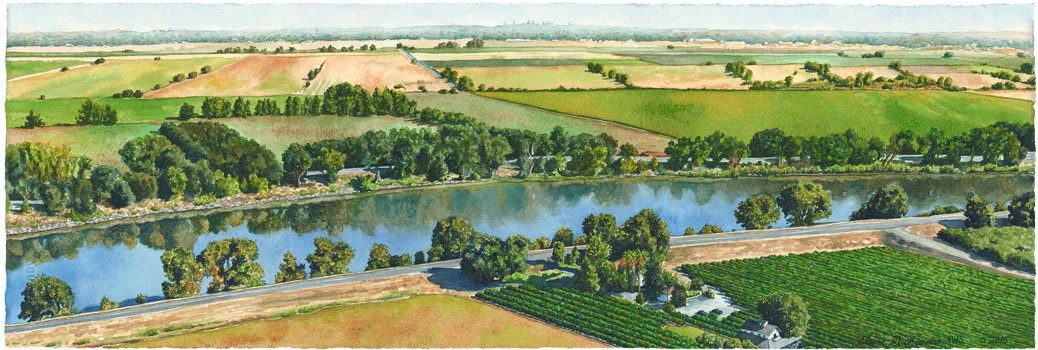What do you get when urban areas and nature meet? You get Preserves, Reserves, and Refuges, oh my!
These conservation spaces are a great way to create a balance between urban sprawl and the depleting environment.
The Sacramento Valley has so many nature areas that need to be experienced in person. Visiting one of these places is a great way to connect to the environment and increase your appreciation and awareness of the flora and fauna that our region has to offer!
Below are some of the TOP local nature areas – each providing some unique features. They are so close to Sacramento, yet provide an escape from the hustle and bustle of urban life. So, if you love hiking, paddling, kayaking, bird watching, photography, or just love to experience the outdoors – check out the many preserves, reserves, and refuges below!
Yolo Bypass Wildlife Area (Davis)
The Yolo Bypass Wildlife Area is located just outside of Davis. You can even see downtown Sacramento skyline from this place. It is approximately 16,600 acres of wetlands and riparian woodlands and is home to many species of birds, reptiles, fish, and more! Its a hotspot for migratory birds as well. During the wet season, this place becomes the inland sea! It looks like a never ending body of water that goes on for miles and miles and provides floodplain habitat for fish.
This place offers wildlife viewing by foot or even by car. Yep, that’s right. You can take a little scenic self-guided tour by car through parts of this wildlife area. Bring your photography game skills!
For more information, visit the website here.
Jepson Prairie Reserve (Dixon)
The Jepson Prairie is located south of the town of Dixon. It’s 1,566 acres of wide open space of wildflowers, vernal pools, and prairies. The vernal pools are home to rare aquatic life such as fairy shrimp and the California tiger salamander. Jepson Prairie is one of the few remaining vernal pool habitats in California. The reserve also protects native bunchgrass prairies that once covered one-fourth of California. Imagine that! This place is home to over 400 plant species.
You can do a self-guided tour or a guided tour of this vast landscape. So, if you come to Jepson Prairie Reserve, be sure to carry your camera with you (nature photography at its finest – hint hint).
To visit this place in person, check out the website here.
Stone Lakes National Wildlife Refuge (Elk Grove)
Stone Lakes National Wildlife Refuge is 6,550 acres in size and is located 16 miles south from downtown Sacramento. The refuge is home to over 200 species of birds, fish, and wildlife. This place provides a sanctuary for these species and is a corridor for neighboring natural areas.
The Blue Heron Trails is a perfect way to experience the peace and serenity of this place, in addition to the educational kiosks along the trail. If you like paddling, kayaking, or canoeing, this refuge offers a paddle program on the water!
To learn more about the paddle program or to visit in person, check out their website here.
Cosumnes River Preserve (Galt)
A personal favorite of mine is the Cosumnes River Preserve. This preserve is located outside of the town of Galt and is connected to the Cosumnes River. It’s over 50,000 acres in size with tons of trails to choose from. It’s home to more than 250 species of birds, over 40 species of fish, and over 400 types of plants.
Enjoy wildlife viewing by hiking the many trails. One of the coolest ways to experience this preserve is to participate in one of the many events that occur throughout the year. You can also bring your kayak or canoe and adventure your way through the Cosumnes waterways! Also, if you love fishing, don’t forget to bring your rod and enjoy fishing by boat.
Check out the website to learn more about this preserve and any of the upcoming events here.
Deer Creek Hills Preserve (Sloughhouse)
Deer Creek Hills is located east of Sacramento. It’s 4,060 acres of oaks and grasslands and provides habitat to 170 species of birds, 105 mammals, 58 amphibians and reptiles and more!
This place is great for hiking, birding, mountain biking, and even horseback riding (saddle up, partner)! Deer Creek Hills is considered to be Sacramento’s largest nature preserve to hike. REI even offers events for photography, hiking, or running.
To take a hike or to learn more about upcoming events, visit the website here.
Effie Yeaw Nature Center (Carmichael)
Last, but not least – we have the Effie Yeaw Nature Center. Named after a local conservationist and environmental educator that led nature and cultural walks in the area in the 1950’s. Effie Yeaw Nature Center is your ultimate nature in an urban space. It’s located in the City of Carmichael and is 100 acres in size. It may be much smaller in size than the other nature areas, but it’s mighty! It’s located right along the American River.
There are plenty of walking trails to experience the variety of wildlife and riparian woodlands. Bring your kids and explore the outdoor space and educational exhibits. The center also offers a variety of events through out the year.
To learn more, come check out the visitor center or the website here.
Take advantage of the nature areas that Sacramento has to offer. Bring your hiking shoes, camera, kids, binoculars, or kayaks – there’s a little bit of everything for everyone.
Go experience nature in urban spaces!












































